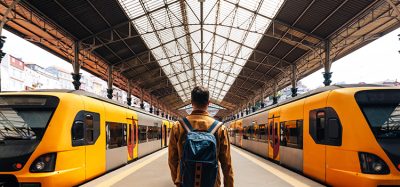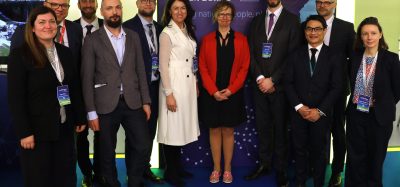Energising Europe’s railways
Posted: 4 February 2016 | | No comments yet
As we turn the page from 2015 to the chapter headed 2016, it is the moment to focus on what this year is likely to bring forth. The key words for 2016 are energy, security, digitalisation and innovation. These are of course only some of the components of the railway system, but they are all key to the efficiency of the railway system and the attractiveness of rail to the customer. But managing them is not without its challenges!
Europe’s railway network is the recognised transport backbone. It is vital for economic growth, to create jobs, to facilitate social development and mobility. Every year it enables millions of people to travel for work and leisure and transports millions of tonnes of freight.
The challenge for rail is to focus on generating a real enthusiasm for rail, attract the customers and as a result strengthen rail’s market position. Passenger numbers are growing and the length of electrified railway has doubled over the past couple of decades, but more is possible.
There is much anticipation around the long-awaited innovation programme called Shift2Rail. The work will start this year and it will be incumbent on the railway community at large to ensure that what is developed and delivered within this multi-million Euro programme will benefit rail stakeholders in the widest possible sense.
Of course there is a need for new technology to support a competitive rail system, but there is also the need to focus on a range of other issues – not all of which the Shift2Rail programme will be able to deliver.
The rail operating community needs to harness its collective energy and encourage investment in the railway of tomorrow, investment that will deliver real benefits for passengers and freight through more capacity and faster and more reliable journeys. This will however mean the need for a holistic approach to identifying and managing projects at a European level – something that will require some really innovative thinking.
Rail has developed a core vision (Challenge 2050) for the design, construction, operation, maintenance and renewal of the rail system and it is this that sets out the challenges of the future. The Shift2Rail programme through to the end of this decade and into the next has significantly increased the level of research and innovation funding that will help to deliver that core vision. However, it will only just scratch the surface of what is really needed to deliver a real shift to rail.
If we take the energy needed for the operation of the system, the goal of a fully-electrified railway system connected to clean and green energy is not a figment of a fertile imagination but a realistic objective. It will help to increase rail market share and further contribute to the reducing rail greenhouse gas emissions.
There has been some success in this area already as 21% of all the electricity used by the railway system comes from renewable sources. This trend is increasing but it requires concentrated funding to help this level to increase.
A research and innovation programme will of course be able to develop new technologies to help that objective, but the real task is to secure the funding to enable installation and operation. Where this requires the consent of local, regional and state authorities, it is vital that there is a coordinated joined-up approach that enables the maximisation of opportunities for connectivity right across Europe. Rail and other modes of transport can greatly benefit from such an approach to delivering a positive focus on sustainable mobility.
On behalf of the railway operating community, the UIC has developed ever closer links with the United Nations and all the work that the UN Environment Programme (UNEP) is promoting. With a seat on the UN Secretary General’s High Level Transport Advisory Group, the possibility exists to bring all these objectives to the table and ensure that the necessary attention is being focussed on developing the future European railway system.
There is a significant opportunity that needs to be embraced and nurtured. Rail must work with the UN, the World Bank and other global and European institutions so that collectively rail is being energised and able to fulfil its potential for society.
Issue
Related topics
Digitalisation, Safety, Security & Crime Management, Sustainability/Decarbonisation







